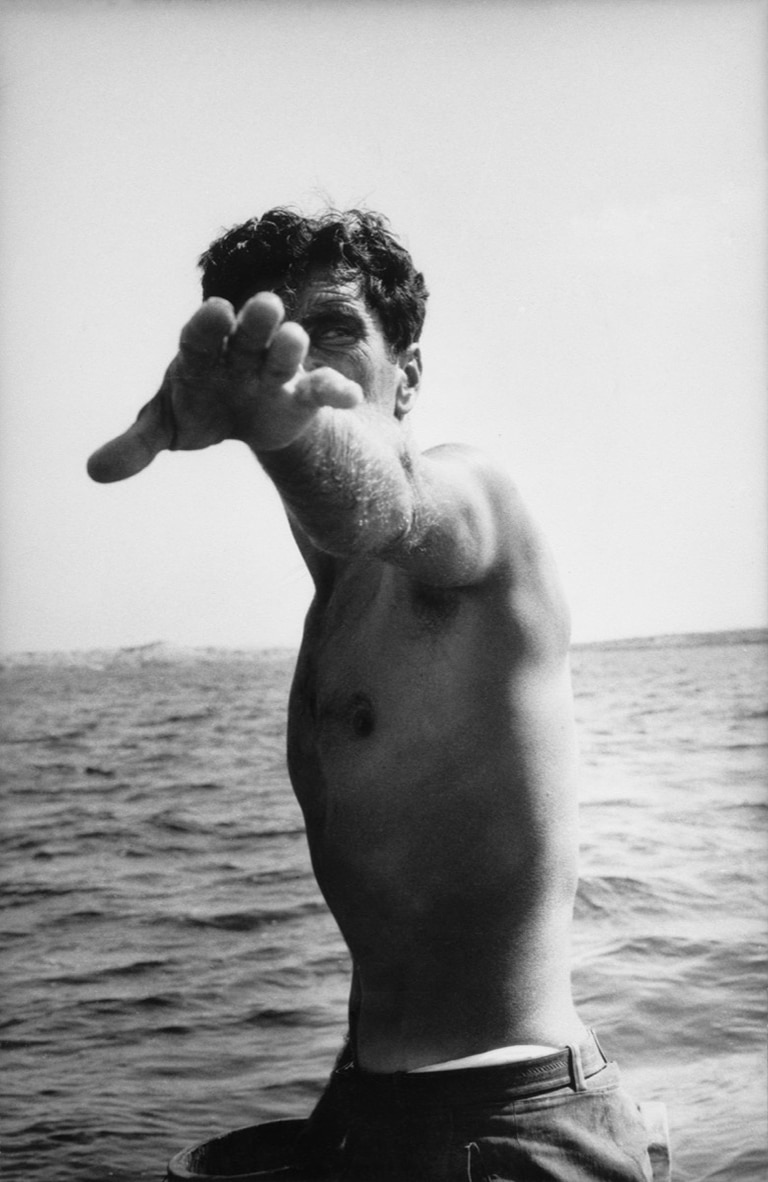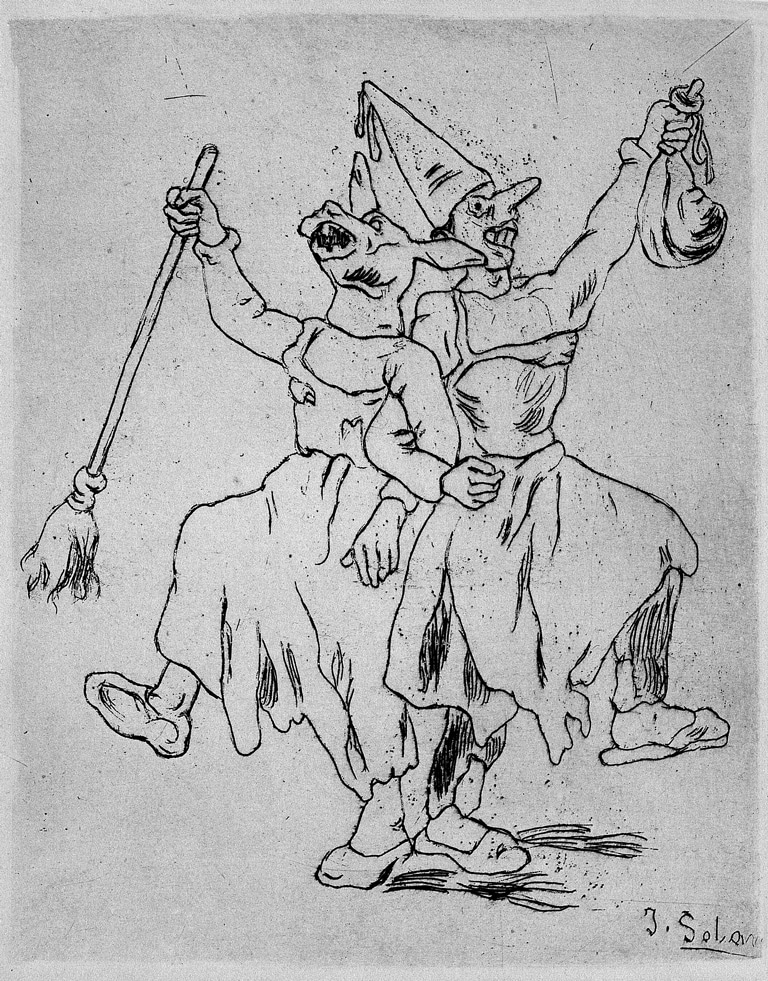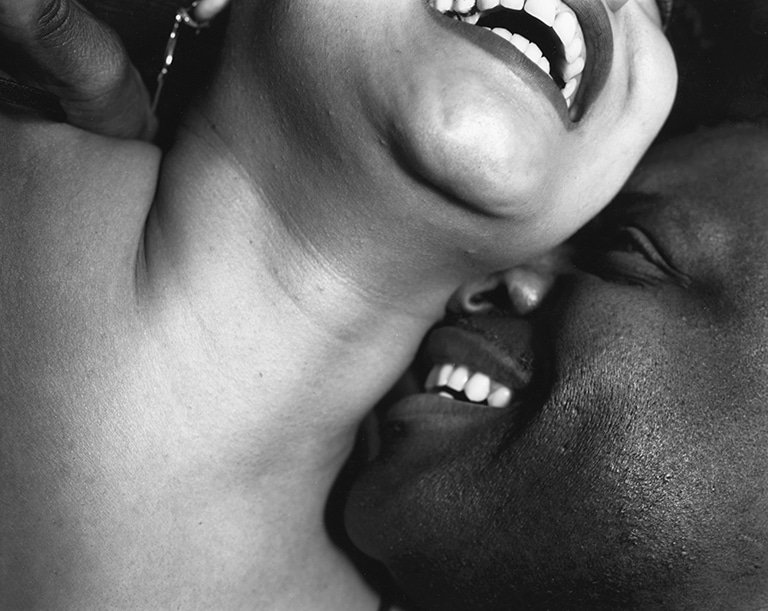Travelling exhibitions

Our exhibition rooms in Madrid and Barcelona are not the only places you can enjoy our photography, drawing, painting and sculpture exhibitions. Once they have been presented in Spain, our idea is that they should be shared far and wide. We want to reach the rest of the world!
Thus the retrospective on Walker Evans headed to Sao Paulo, Stephen Shore to Berlin, Vanessa Winship to Las Palmas de Gran Canaria, the selection of drawings in our collection Hand with Pencil to El Salvador and From Divisionism to Futurism to the Museum of Modern and Contemporary Art of Trento e Rovereto, in Italy.
Part of our program travels to museums and cultural institutions in Europe, North America and Latin America. We want to take art to every corner of the globe. And we hope it reaches you too.
72 exhibitions

Louis Stettner
Woman Holding Newspaper, New York , 1946
Courtesy of the Louis Stettner Archive, Paris
© Louis Stettner Estate
Louis Stettner
– 08
Antiguo Instituto Jovellanos (Gijón, Asturias)
Poetry. Street photography. Lyrical humanism.
Louis Stettner (New York, 1922-Paris, 2016) trained at the New York Photo League school, where he studied under Sid Grossman and coincided with Weegee, who would become a great friend of his. In Paris he met Brassaï, who became his mentor. However, despite being fully immersed in the debate on historical photography for a good part of the last century, his work was not given the recognition it deserved at the time, perhaps because it did not adhere to a specific style.
Straddling New York and Paris, Stettner was rooted in two worlds at a time when most photographers could only relate to one. In this sense, his work contains aesthetic elements of both New York street photography, with its bustling subway scenes, and the lyrical humanism of the French tradition, with the mountainous landscapes of the Alpilles in France.

Carlos Pérez Siquier
Roquetas de Mar, 1973
© Carlos Pérez Siquier. VEGAP, 2024
Carlos Pérez Siquier. Fundación MAPFRE Collections
– 02
Fundación MAPFRE Canarias (La Laguna, Tenerife)
Modernity. Intuition. Originality.
Carlos Pérez Siquier (1930-2021), a leading figure in the forging of photographic modernism and the professionalizing of this medium in Spain, enjoyed a prominent place on the Spanish scene, firstly for his neorealism work and later as a pioneer of color photography.
If there is something that characterizes and makes the photography of Carlos Pérez Siquier so valuable and interesting, it is, on the one hand, the theme that runs through it from beginning to end–the author’s real and immediate world–and, on the other, the keen and unique gaze that the photographer poured into the images. This results in one of the most powerful and important bodies of work in Spanish photography from recent decades, which earned him the 2003 Spanish National Photography Prize.

Berenice Abbott
Peggy Guggenheim poses in her New York gallery Art of This Century, October 22, 1942
© 2025 Estate of Berenice Abbott
© AP Photo / Tom Fitzsimmons
31 Women. A Peggy Guggenheim exhibition
– 29
Museu de Artes Contemporânea – MAC (Lisboa, Portugal)
Talent. Opposition. Feminism.
In 1943, the collector Peggy Guggenheim organized one of the first exhibitions exclusively dedicated to the work of female artists in her New York gallery, Art of This Century. Entitled Exhibition by 31 Women, one of its aims was to highlight the contribution of women artists, who had often been relegated to the role of muses, imitators or companions of famous male artists due to the patriarchal mentality of the time.
The artists selected for 31 Women–including both established creators and emerging talents–came from Europe and the United States, and many of them were linked to surrealism and abstract art. Aware of the challenges they faced as women, these artists often swam against the tide, using the dominant artistic languages of their time: they reinterpreted the concepts of surrealism and abstract expressionism to reveal the patriarchal precepts on which these movements were based.

David Goldblatt
Lulu Gebashe and Solomon Mlutshana, who both worked in a record shop in the city, Mofolo Park, 1972
© The David Goldblatt Legacy Trust
David Goldblatt. No ulterior motive
– 22
Yale University Art Gallery (New Haven, CT, USA)
Apparent calm. Privilege. Apartheid.
The prestigious South African photographer David Goldblatt (Randfontein, 1930 – Johannesburg, 2018) dedicated his life to documenting his country and its people. Known for his subtle portraits of life under apartheid, his work, which covers a wide range of subjects, is today indispensable for understanding what is undoubtedly one of the most painful processes and difficult periods in contemporary history.
The keys to the exhibition revolve around three themes: the representation of everyday life, “the quiet and the ordinary where nothing ‘happened’”, so that the viewer could draw their own conclusions; the greater freedom to document life in South Africa in the most honest and direct way possible on account of being white; and the need to document apartheid.

Daniel Vázquez Díaz
Las bañistas / Desnudos en la piscina, Oil on canvas, ca. 1930
Fundación MAPFRE Collections
© Daniel Vázquez Díaz. VEGAP, Madrid, 2022
Daniel Vázquez Díaz and the new art. Fundación MAPFRE Collections
– 15
Museo de Bellas Artes de Castellón (Castellón)
Tradition. Vanguardism. Tempered cubism.
Daniel Vázquez Díaz (Aldea de Ríotinto (now Nerva), Huelva, 1882 – Madrid, 1969) attended classes at the Ateneo de Sevilla. After spending some time in Madrid in 1906, he moved to Paris, where he lived for around twelve years. In the French capital he socialized with the Spanish artists who had settled there: Ignacio Zuloaga, Joaquim Sunyer, Hernén Anglada Camarasa, Juan de Echevarría, Pablo Picasso and Juan Gris, among others. In France he produced Spanish-inspired paintings in the fashionable style of the day, as well as portraits in the tradition of the Spanish Golden Age. Meanwhile, he learned about the new avant-garde trends that he would begin to develop after returning to Spain in 1918.
Upon settling in Madrid for good, Vázquez Díaz’s work was embraced by critics and the intellectuals around him as part of the new art, which in this case was referred to as tempered cubism.

Christer Strömholm
Barrio Chino, Barcelona, 1959
© Christer Strömholm Estate
Christer Strömholm
– 20
Challenge. Infancy. Self-portrait.
Fundación MAPFRE presents a retrospective exhibition on the work of Swedish photographer Christer Strömholm (Stockholm, 1918-2002), one of the most iconic figures in post-war European photography, who received his greatest recognition somewhat late in life, when he was awarded the Hasselblad Prize in 1997.
The photographer’s intuitive work expresses a unique world of images into which he pours all his senses and experience and with which he challenges all kinds of prejudices and stereotypes. Strömholm finds valuable meanings in the humblest of objects, to which he gives significance.
In 1958, Strömholm bought a dilapidated house in a remote village in the French region of Provence, where he began to collect all kinds of broken, discarded objects, which for him represented mementos of his own life and childhood. Strömholm always identified with children; as he himself pointed out, his images are self-portraits, representations of himself at different ages.

Louis Stettner
Tony, “Pepe y Tony, Pescadores españoles” (Pepe and Tony, Spanish fishermen), Ibiza, Spain, 1956
Fundación MAPFRE Collections
© Louis Stettner Estate, 2024
Louis Stettner
– 02
Centro Andaluz de la Fotografía (Almeria)
Social commitment. Poetry. Belief in the human being.
Louis Stettner (New York, 1922-Paris, 2016) was trained at the Photo League school in New York. In Paris he met Brassaï, who became his mentor. His experience as a photographer during the Second World War profoundly conditioned his understanding of life. This is reflected in his work, which is based on a firm belief in the human being.
Stettner’s work encompasses a multitude of subjects, from almost empty urban environments to bustling scenes of the New York subway, the routines of workers and laborers, and the mountainous landscapes of the French Alpilles massif in his later years.
Louis Stettner’s work was not given the recognition it deserved at the time. This exhibition aims to mitigate this lack of recognition and make the general public aware of the artist. It also celebrates the work of a creator whose photography captured the poetry of everyday life.

José Gutiérrez Solana
Máscaras bailando cogidas del brazo (Masks dancing arm in arm), ca. 1933 – 1934
Fundación MAPFRE Collections
© José Gutiérrez Solana, VEGAP, 2023
Solana the engraver. Fundación MAPFRE Collections
– 02
Museo Gustavo de Maeztu (Estella, Navarra)
Singularity. Eccentricity. Darkness.
Fundación MAPFRE has an important collection of José Gutiérrez Solana’s engravings, including twenty-six of the twenty-eight etchings catalogued by Rafael Díaz-Casariego and four of the seven surviving lithographs. These offer a representative view of the artist’s body of work, undoubtedly one of the most singular figures of 20th century ¬Spanish art.
Both his life and his work reveal an eccentric personality, impossible to pigeonhole within the framework of the conventional artistic scene.¬ Creating a deeply personal vision, in his paintings, etchings and lithographs, as well as in his texts, Solana seems to approach the Spanish literature of his time, although he remains oblivious to any sense of criticism or regenerationism. On the contrary, he shows us a dark reality within which he seems to move with absolute ease.

Nicholas Nixon
J.A., E.A., Dorchester, Massachusetts, 2001
Fundación MAPFRE Collections
© Nicholas Nixon
Nicholas Nixon
–
Cascais Cultural Centre (Cascais, Portugal)
Social concern. Simplicity. Intimacy.
Nicholas Nixon (Detroit, Michigan, 1947) explores singular worlds with notable social concern, revealing unnoticed aspects of reality pertaining to the artist’s private experiences. However, given their everyday nature, we can identify with them and they easily evoke in us the echo of memories and emotions. Nixon employs a simple, almost obsolete, but flawless technique; the use of large-format cameras imposes a closeness and the cooperation of the subjects to reveal nearby worlds which grab his attention: the elderly, the sick, the intimacy between couples and the family.
This retrospective on his work (1974-2024) features more than 200 photographs. In it we find a clear guiding thread, a world of its own that has no limits and an extraordinary capacity for reinvention.
